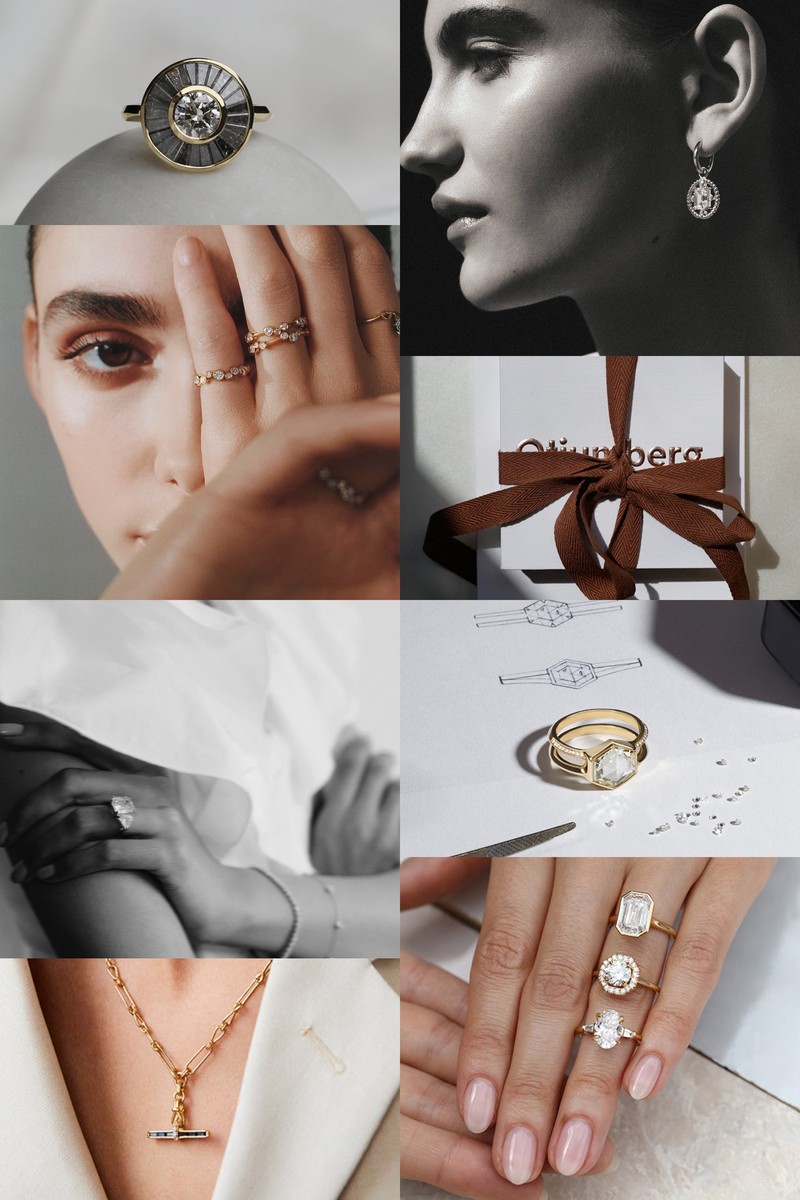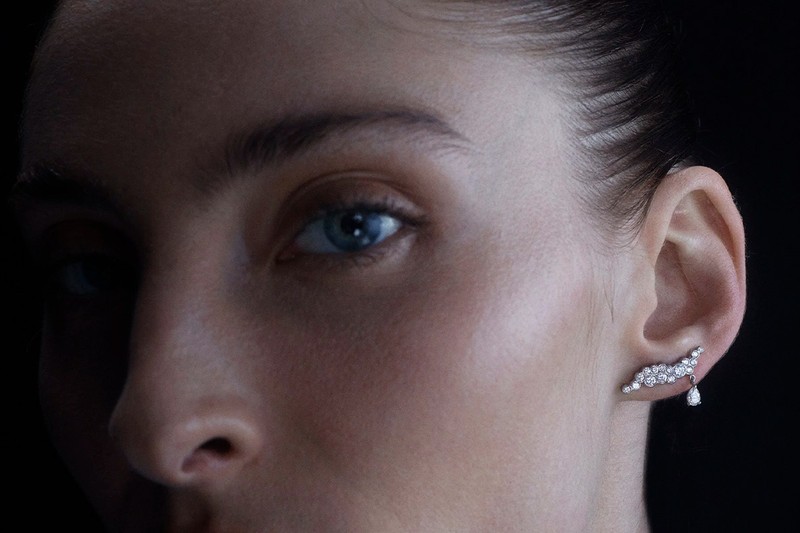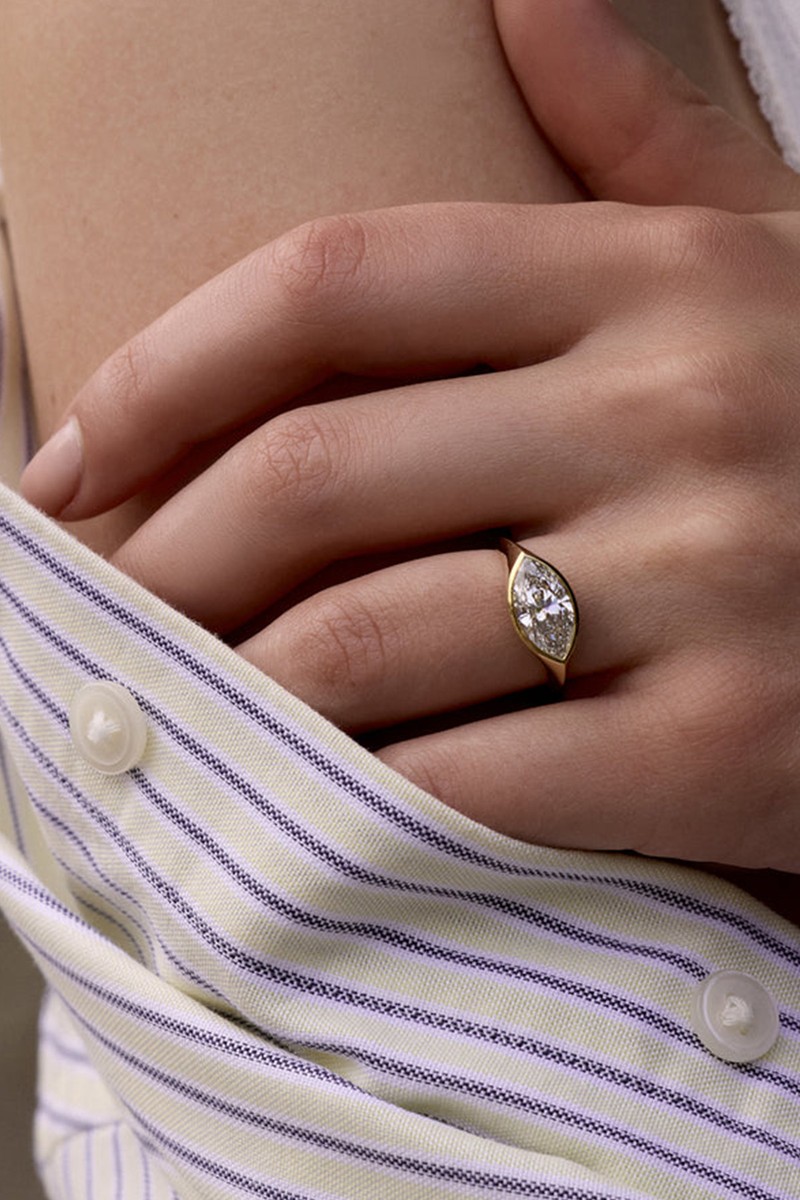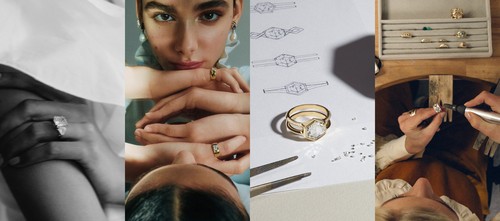
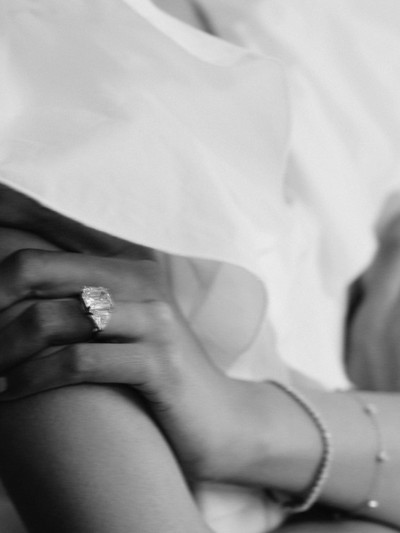
A Guide To Remodelling, Resetting & Replating Jewellery
All products on this page have been selected by our editorial team, however we may make commission on some products.
The Budget
How much you spend on resetting or remodelling jewellery depends on your goals – whether you’re breathing new life into a family heirloom or transforming old pieces into something wearable again. “The complexity of the design and number of pieces involved can raise that number significantly,” says Rachel Boston, founder of her eponymous East London atelier. “Resetting a stone into a new ring, for example, is usually more cost-effective than remodelling several smaller items into a cohesive new piece.”
If you’re considering using recycled gold or stones, you may also reduce material costs. Eliza Walter, founder of Lylie Jewellery, adds: “Clients often send in broken chains, odd earrings or inherited pieces. We value the gold, and they use put that credit towards a new bespoke design – it’s a sustainable and accessible way to create something meaningful without starting from scratch.”
Replating services vary depending on the material, finish and complexity. At Heavenly London, prices typically start at £30-£60 for simple rings or studs, with more complex items costing up to £120. At Otiumberg, prices start from £25, and Laura Vann’s Refurbishment Service is a flat £45 per item, covering replating, reshaping, cleaning and even replacing missing stones.
The Design Process
Resetting and remodelling jewellery is as much about meaning as it is about aesthetics. “Clients come to us when a piece no longer suits their lifestyle or after a big life event,” says Rachel. “The process always begins with a conversation. What’s the story? What’s worth preserving? That’s what guides the future design.”
Once the piece is assessed, the jeweller will usually present sketches or 3D renderings for clients to consider. “We look at the materials, which stones are reusable, whether the metal is suitable for remelting and make suggestions based on the client’s personal style,” says Eliza. “Sometimes people are surprised at how modern an old-cut diamond can look in a minimal, contemporary setting.”
While some clients want to be part of every decision, others hand over full creative control. “Either is fine,” says Rachel. “It’s about trust and clear communication. Our job is to make sure what’s sentimental becomes stylish and wearable again.”
The Materials
Not all inherited jewellery is made from high-quality metals, which can influence what’s possible. “We work almost exclusively in recycled 18ct gold or platinum,” says Eliza. “Sometimes clients send in 9ct gold, which is fine, but it’s not always suitable for remodelling into fine jewellery – particularly engagement rings, which need to withstand daily wear.”
Recycling your own metal can be a special part of the process but it’s not always straightforward. “Some metals – especially antique alloys – can be too brittle or impure,” explains Rachel. “In those cases, we refine the gold first or supplement it with certified recycled metal to ensure future strength and quality.”
The Gemstones
Inherited gemstones often come with quirks: old cuts, surface wear or sentimental flaws. “Antique diamonds are full of personality,” says Rachel. “Old European and Old Mine cuts aren’t as sparkly as modern brilliants but they have a softness and charm that’s hard to replicate.” Coloured stones require a bit more care. “Emeralds and opals are beautiful but delicate,” says Eliza. “We usually advise against using them in everyday rings unless they’re well protected by a bezel or halo setting. Sapphires, rubies and spinels are much more robust.”
Sometimes clients expect every stone to be reused but that’s not always realistic. “Tiny diamonds can be too chipped or cloudy,” says Rachel. “We’ll always advise if it’s better to leave them out or swap them for fresh, matching stones.”
Jessie Thomas, founder of Jessie Thomas Jewellery, says she is always hesitant to remove tiny stones from pieces: “Especially if they are diamond chips, which were used a lot in Victorian times. It’s honestly cheaper to replace them with new diamonds, once you’ve costed up the work to remove them and reset. Plus, they lack any intrinsic value. Sometimes stones will need a repolish too if they are scratched from years of wear – bear in mind this can take some time but it will be worth it.”
The Setting
The setting is where old meets new. “We always design the setting around the stone, not the other way around,” says Eliza. “The aim is to make it feel like a completely new piece, not a compromise.” Classic claw settings work beautifully for older cuts, while rub-over or bezel settings offer a more contemporary, low-maintenance option. “A bezel setting can modernise even the most traditional stone,” says Rachel. “It’s also secure and wearable – ideal for everyday pieces.”
You can also combine multiple elements into one design. “We recently melted down a client’s wedding ring and used the gold to make a new band, set with diamonds from her grandmother’s earrings,” says Eliza. “It was subtle, meaningful and entirely one of a kind.”
Resetting stones can be surprisingly cost effective. “The price of a new diamond is quite high. If you have a good diamond, over half a carat or so, then changing the setting is a great option. If it’s a stone you love that has less value, then probably not so much – but in this case, it has far more to do with sentimental and sustainable reasons,” says Jessie.
The Replating
Sometimes, it’s less about redesigning and more about refreshing. “Replating is an easy way to revive jewellery that’s looking dull or patchy,” says Maddy Sangster of Heavenly London. “We recommend 2.5 microns of gold for everyday pieces as it gives good durability while remaining cost-effective.”
Silver-based pieces can be replated multiple times, but it’s important to store and wear them correctly. “Keep items away from perfume, water and sweat,” Maddy advises. “And when you’re not wearing them, use individual pouches or small plastic bags to minimise tarnishing.”
If your gold-plated jewellery is wearing thin, but you love the design, consider having it remade in solid gold. “Clients often start with plated pieces and come back to commission them in 9ct or 18ct gold once they know they’ll wear them long-term,” adds Laura Vann of V By Laura Vann.
“We actively encourage our customers to engage with the replating service as it fosters a longer-term mindset around gold plated jewellery,” add Rosanna and Christie Wollenberg of Otiumberg. “We re-plate to gold vermeil standards – typically 2.5 microns – which ensures the piece is restored to our standards and will last.”
There’s also growing awareness of the limitations of so-called “non-tarnish” jewellery. “This trend is often based on gold-filled plating over cheap metals like brass or stainless steel. Once the coating wears off, it becomes landfill,” says Maddy. “At Heavenly, we use solid silver, double plated in 18ct gold. It’s skin-safe, repairable and made to last – so while it may need replating over time, it’s a smarter and more sustainable choice.”
The Recycling
For those with broken, unloved or outdated jewellery, recycling can be the most rewarding route. “Through our Gold Exchange, customers send in their scrap or unwanted jewellery and we give them credit based on current gold prices,” explains Eliza. “We’ve had people trade in a handful of pieces and end up with a completely bespoke ring – all from what was sitting in a drawer.” The process is surprisingly straightforward. “We assess the value, offer a quote, and once approved, the credit can go towards any of our ready-to-wear or bespoke designs,” Eliza adds. “It’s a great way to repurpose something forgotten into something you’ll actually wear.”
The Final Need-To-Knows
Once replated, treat your jewellery like new. “Avoid moisture, chemicals and direct abrasion — remove pieces before exercise or sleep,” says Laura. “Store them in individual grip bags or pouches and clean with a soft, dry cloth.” While remodelling or resetting isn’t always cheaper than buying new, it’s often more meaningful. “Jewellery should evolve with you,” says Rachel. “Remodelling allows you to honour the past while creating something that fits your life now.”
DISCLAIMER: We endeavour to always credit the correct original source of every image we use. If you think a credit may be incorrect, please contact us at info@sheerluxe.com.
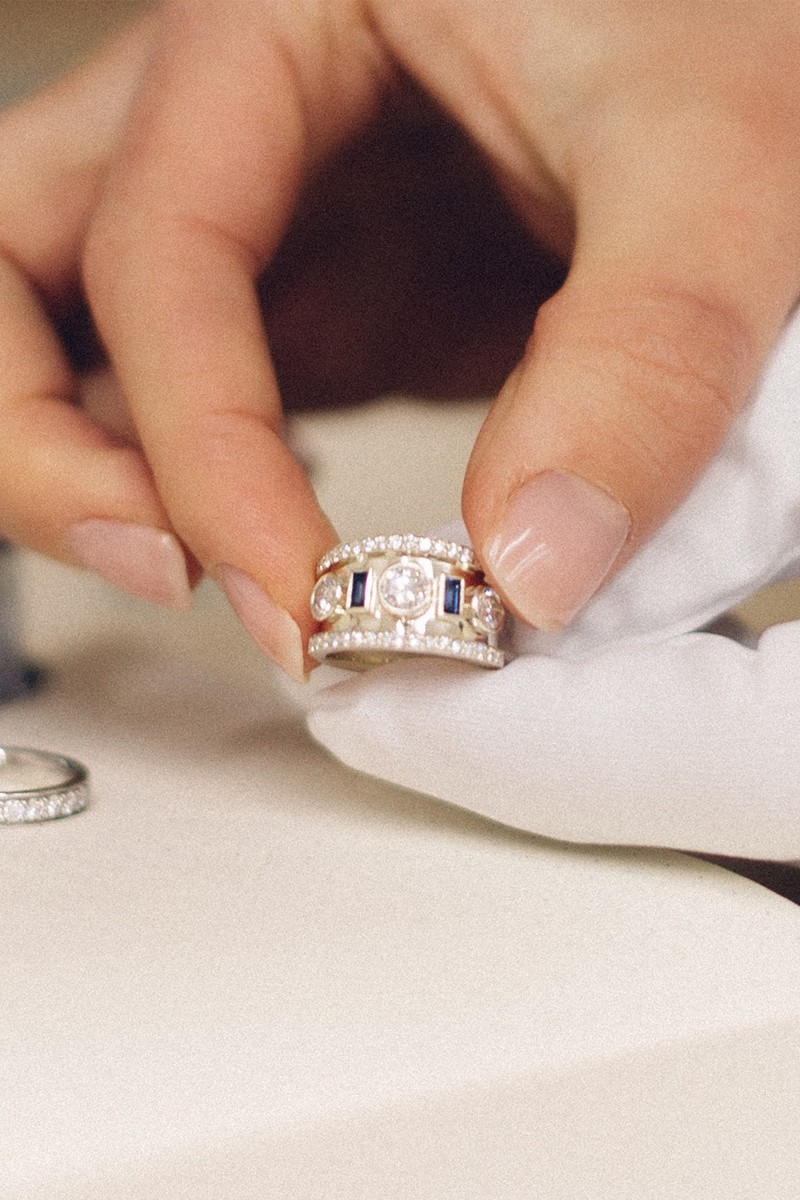
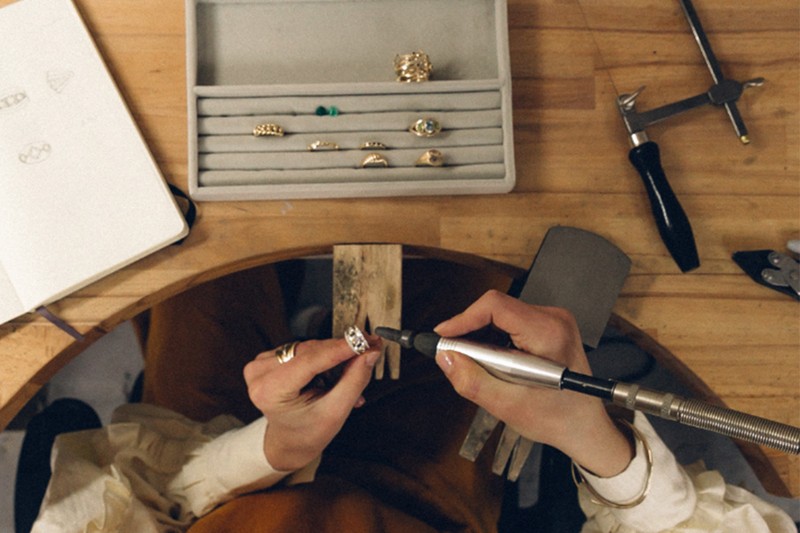
/https%3A%2F%2Fsheerluxe.com%2Fsites%2Fsheerluxe%2Ffiles%2Farticles%2F2025%2F07%2Fsl-040825-replating-jewellery-3.jpg?itok=UtgBhPOK)
